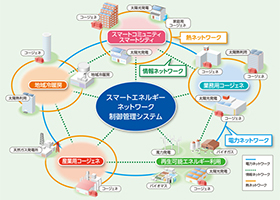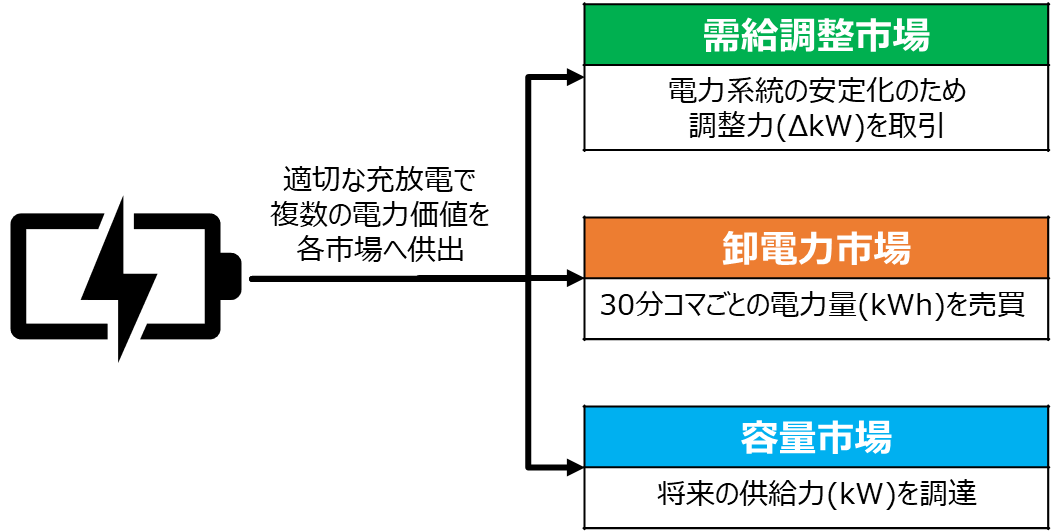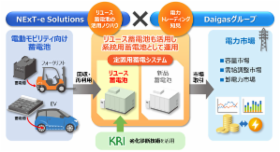Energy management
Smart Energy Network (SEN) for Optimizing Energy Use in a Community by Connecting Cogeneration Systems via a Telecommunications Network
Overview
The Smart Energy Network is designed to combine renewable energy sources (e.g., photovoltaic power plants ) with large power plants, gas cogeneration systems and customers’ loads to share electric and thermal energy and thereby achieve energy saving and CO2 emissions reduction.
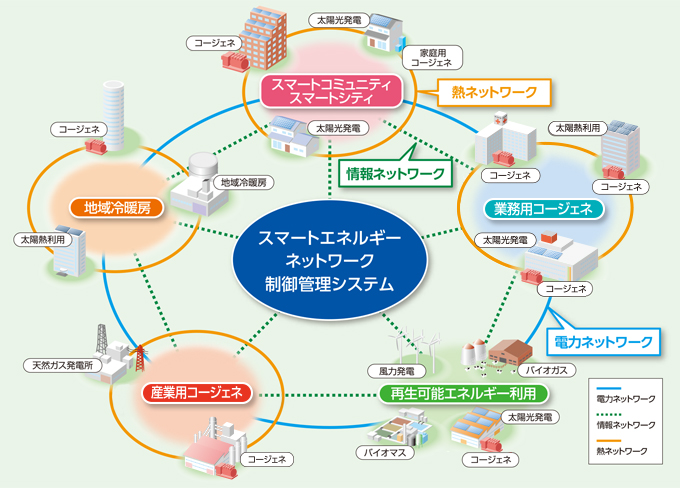
Background/Challenges
① Insufficient balancing capacity
Renewable energy, such as photovoltaic power plants, has been actively promoted to achieve a low-carbon society. It should be noted, however, photovoltaic power plants poses challenges such as unstable power grid frequency* because the output fluctuates significantly depending on weather conditions.
Thus, introduction of renewable energy on an extensive scale would result in unstable supply in addition to inherent fluctuating demand in the grid. In such cases, stabilizing the electricity demand-supply balance generally requires a new investment on installations such as large-scale storage batteries.
Osaka Gas has been working to develop technologies for ensuring coordinated operation of photovoltaic power plants and cogeneration systems to stabilize electricity supply.
* The frequency serves as an indicator of demand-supply balance throughout the power grid of an electric power company, as shown in the illustration below. In the western area of Japan, the frequency fluctuates around the reference frequency of 60 Hz.

② Insufficient supply capacity
Since the Great East Japan Earthquakes occurred, Japan has been facing steady insufficiency of power supply. Therefore, not only large-scale power systems but also negawatts, which are the supply capability of customers’ power sources and generators, are gaining recognition.
Osaka Gas has been working to develop technologies for group controlling of cogeneration systems installed at customer sites and providing supply capacity.
Technology 1: Mitigation of photovoltaic output fluctuation
Fluctuation in output of photovoltaic power plants can be mitigated by measuring such fluctuation and controlling cogeneration output to cancel the fluctuation.
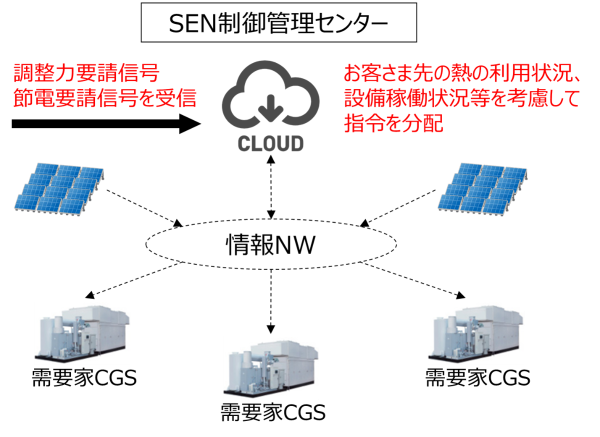
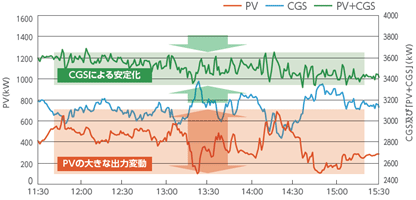
Technology 2: Group control of cogeneration systems
In response to a request to cut down on electricity issued by an external party, required supply capacity is provided by simultaneously raising outputs of multiple cogeneration systems.
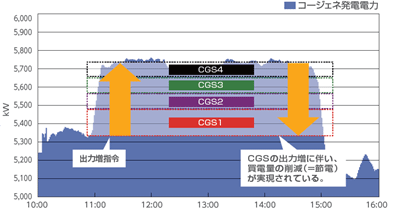
Application example of Smart Energy Network system
The Smart Energy Network system connects geographically distant renewable energy systems and cogeneration systems by information and communications technology and balances energy supply and demand within that community.
Assume, for example, that the electricity market price has soared. Then, when the Smart Energy Network system detects the output of relevant photovoltaic power plants systems has decreased, the system determines the cogeneration systems and customers’ loads that can be most efficiently controlled within the community according to their current operation conditions and raises the output of the cogeneration systems or reduces customers’ loads. In this way, the Smart Energy Network system helps improve the balance between supply and demand throughout the entire grid.
Operation of a model as described above has already started on a trial basis.
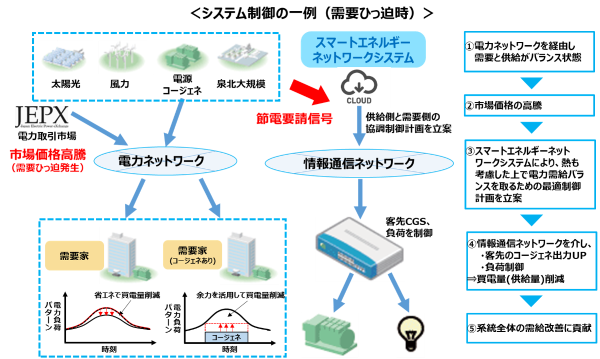
Related contents
TAG SEARCH
- Evolving residential gas appliances
- Evolving residential gas appliances Water heaters, space heaters, dryers Cooking appliances Smart Equipment Fuel Cell systems
- Evolving commercial and industrial gas appliances
- Evolving commercial and industrial gas appliances Cogeneration (CHP) units Air conditioning systems, kitchen appliances Bio, water treatment Industrial furnaces, burners Energy management, IoT
- Enhancing the safety and economic efficiency of LNG regasification
- Enhancing the safety and economic efficiency of LNG regasification Utilization of cold energy Plant materials Power generation technology
- Developing next-generation businesses through enterprising initiatives
- Developing next-generation businesses through enterprising initiatives Materials development Measurement Simulation, data analysis Food science Material evaluation
- Contributing to conserving the environment and achieving a carbon neutral society
- Contributing to conserving the environment and achieving a carbon neutral society Methanation Hydrogen, ammonia Biogas Energy management Renewable Energy
- Technologies of Group companies
- KRI, Inc. Osaka Gas Chemicals Group OGIS-RI Group

